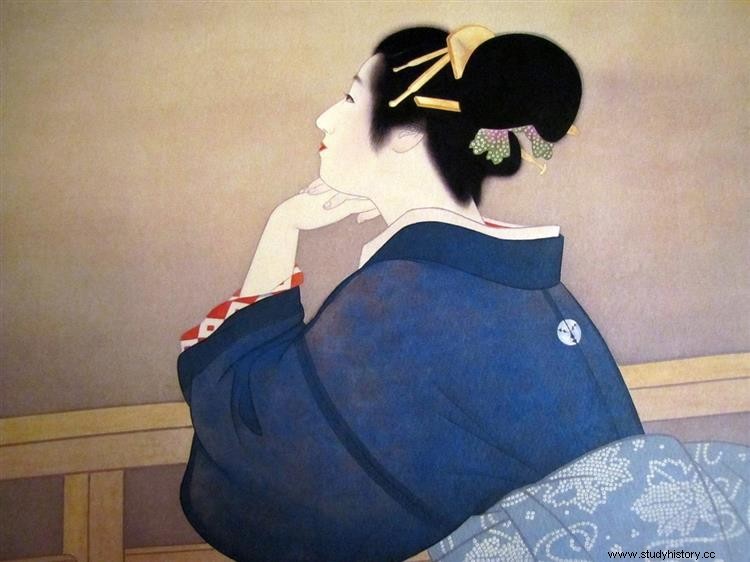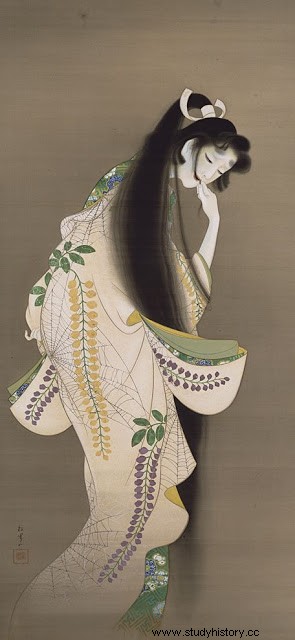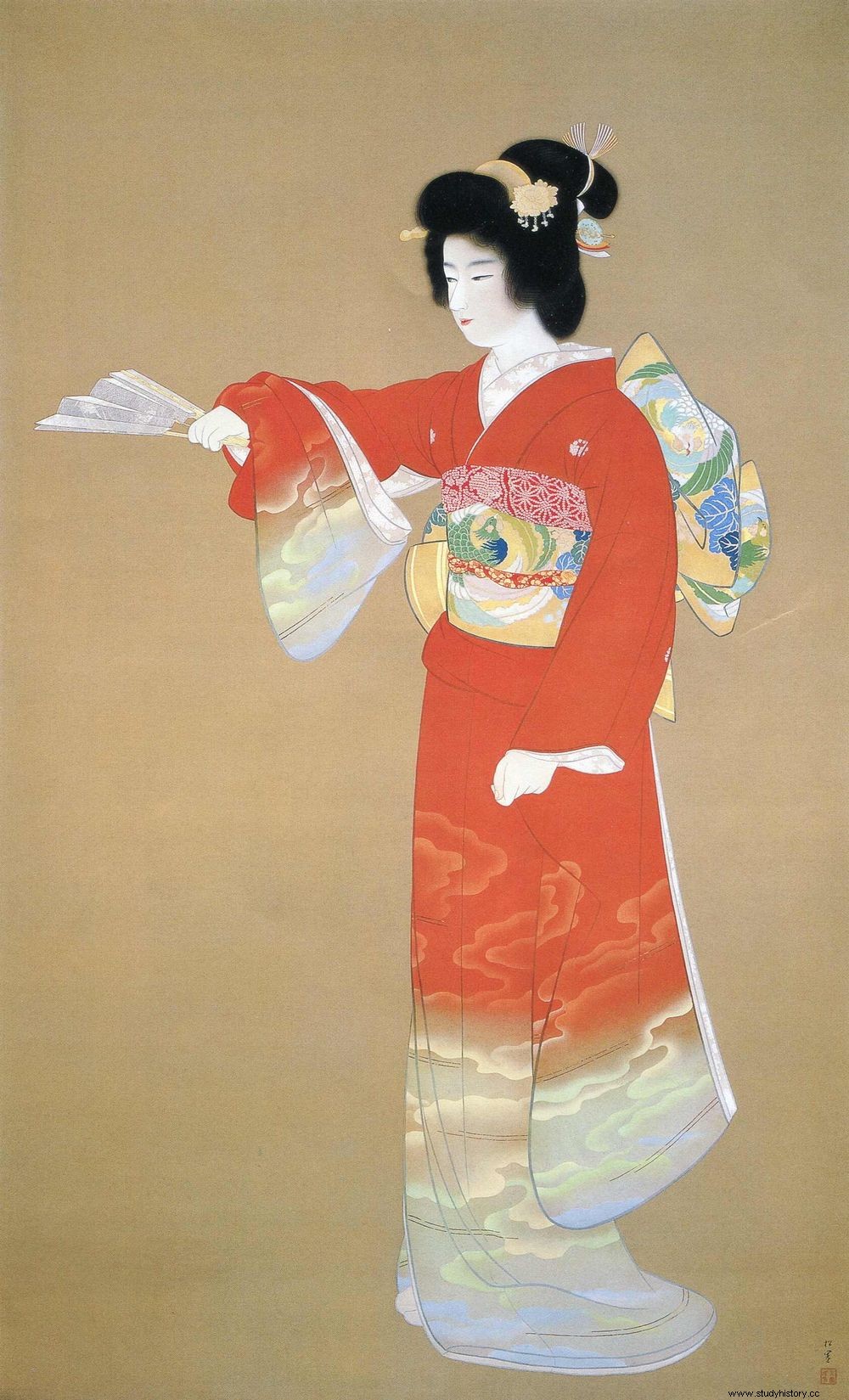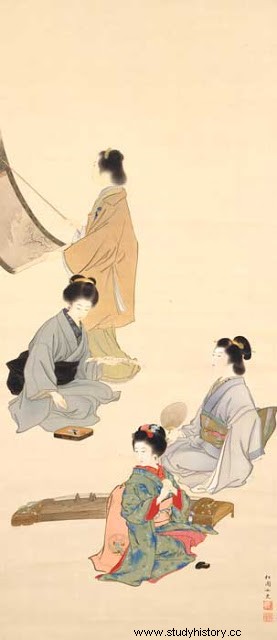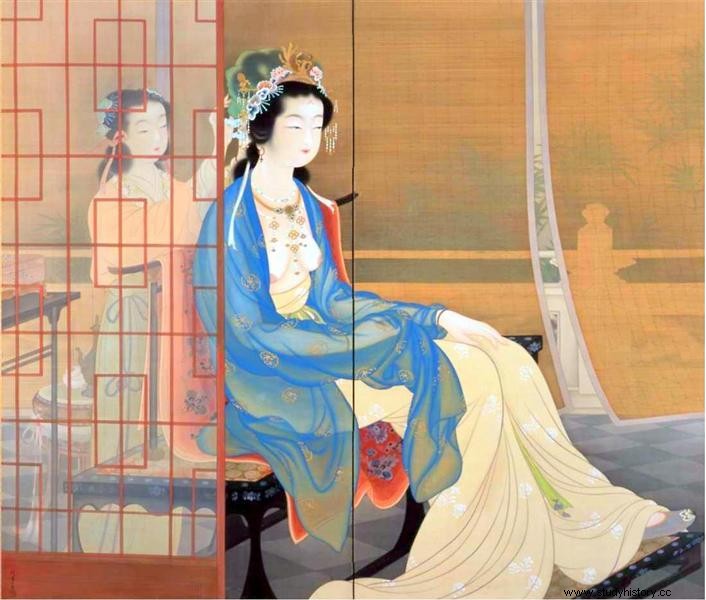Japanese painter, Uemura Shōen (1875 – 1949) works on many different subjects but is known mainly for his portraits of women. She is considered a great innovator in this traditional art.
A young artist
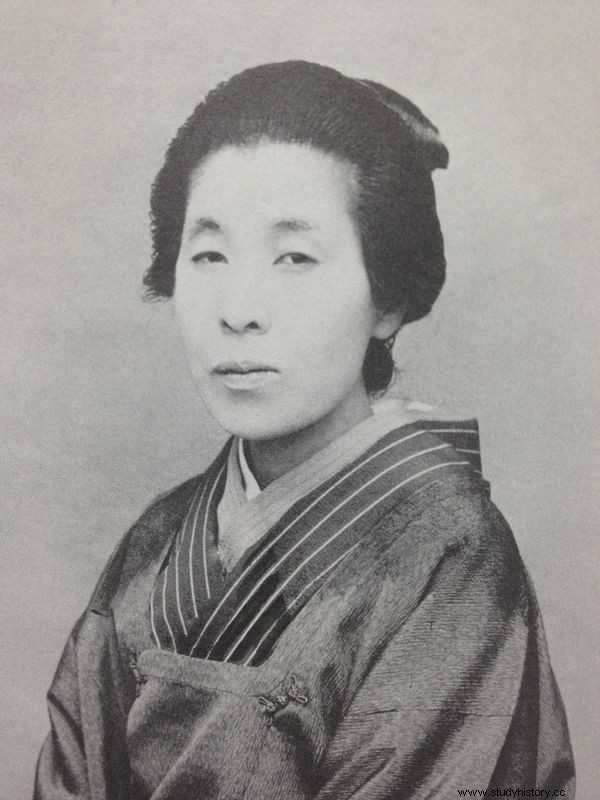
Uemura Shōen, real name Uemura Tsune, was born in Kyoto, Japan on April 23, 1875; she is already an orphan. Her father, a tea merchant, died two months before she was born. Tsune was raised by her mother and aunts, among the cultured clientele that frequented the store for the art of the tea ceremony.
From childhood, Tsune shows a great interest and a real predisposition for drawing, in particular for the representation of human figures. She was supported in this by her mother who encouraged her to develop her talent, which was rare for a young girl at the time:women were generally restricted to the domestic and family sphere. Quickly, Tsune shows and exhibits her art, and earns praise. She is particularly interested in the art of ukiyo-e (“image of the floating world”), the art of the woodcut print.
Studies with masters
Uemura Tsune began studying at the Municipal University of Arts in Kyoto, with the painter Suzuki Shōnen who specialized in landscapes; she was introduced to different styles of painting. His teacher was so impressed with his progress that he allowed him to resume painting human subjects in his private studio, something students were theoretically not allowed to do until their senior years. It was during this period that Tsune earned her artist name, Uemura Shōen.
Shōen left the Kyoto Academy before graduating, and learned from other teachers to diversify his art and technique. This education is even rarer; while young women are encouraged to practice drawing and painting in the private sphere, very few learn it from masters and even fewer can make a career out of it. These conventions do not stop Shōen, who is determined to develop her art, even if it means fighting against prejudices in passing if necessary; these are not, moreover, the only traditions that it will shake up.
First prizes and exhibitions
At fifteen, Uemura Shōen wins a first prize for his work Les belles aux quatre saisons; the print was bought by the son of Queen Victoria, passing through Japan, which earned the young artist immediate fame. In 1893, when she was only 18, Shōen was selected to exhibit a work at the Chicago World's Fair. In 1898, she won a prize in Kyoto and saw one of her works selected for an exhibition; two years later, she won a national prize.
Shōen explores different themes but specializes in particular in bijin-ga , the "paintings of beautiful people" and generally of beautiful women. She will say: “I never painted a work in the hope that it would be beautiful as long as the woman represented was beautiful. I sincerely hope that all my works are like perfumed jewels, always with a sense of fresh purity, without even an iota of vulgarity”.
For a time, Shōen's reputation suffered from rumors of a relationship with his former teacher, Suzuki Shōnen. At 27, she gave birth to a boy, Uemura Shōkō, who would also later become a painter. Refusing to reveal the name of her father, she raises him alone, just like her daughter who will be born some time later.
Pioneer
Apart from a slow period between 1917 and 1922, Shōen continued to paint and exhibit. In the 1930s, she produced large works often considered her greatest masterpieces, including Jo-no-mai (1936) and Soshi-arai Komachi . She often draws inspiration for her female portraits from the roles of women in nô theatre; roles played by men, but for which Shōen then uses female models to transcribe them in painting.
In 1941, Shōen was the first woman to join the Japanese Academy of Arts. In 1944, she was appointed court painter. During World War II, she expressed her nationalism and her support for her country through her art, and traveled to China at the request of the government in order to prove that all was well there. In 1948, Uemura Shōen was the first woman to be awarded the Japanese Order of Cultural Merit.
Uemura Shōen died of cancer in August 1949, at the age of 74.

